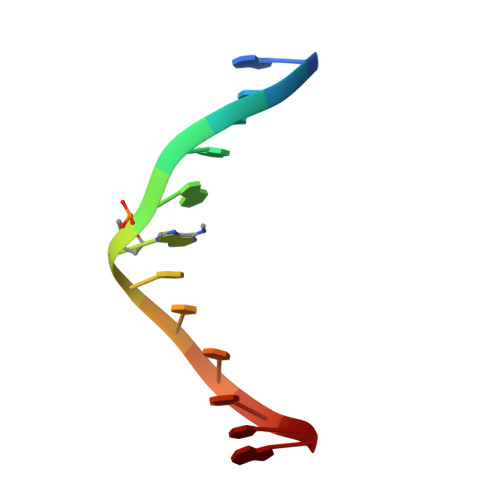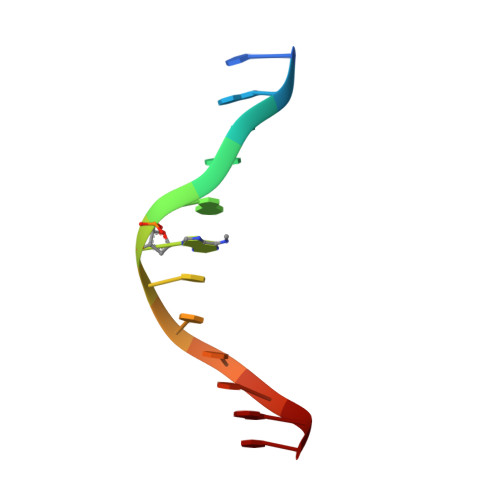Structural and dynamics study of DNA dodecamer duplexes that contain un-, hemi-, or fully methylated GATC sites.
Bang, J., Bae, S.H., Park, C.J., Lee, J.H., Choi, B.S.(2008) J Am Chem Soc 130: 17688-17696
- PubMed: 19108701
- DOI: https://doi.org/10.1021/ja8038272
- Primary Citation of Related Structures:
2KAL - PubMed Abstract:
Methylation of DNA plays a regulatory role in DNA metabolism. The Escherichia coli DNA adenine methyltransferase methylates the N6 positions of adenines in the sequence 5'-GATC-3', which exists in the fully methylated state during most of the cell cycle. Just after DNA replication, however, the GATC sites transiently become hemimethylated, a condition that is indispensable for various cellular processes, such as negative modulation of replication initiation at oriC by SeqA. The lack of structural and dynamic information on DNA duplexes that contain fully methylated GATC sites makes it difficult to explain how hemimethylated GATC sites are recognized in vivo by proteins in a sea of fully methylated ones. Here, we used NMR spectroscopy to characterize the solution structure of a dodecamer DNA duplex that contained a fully methylated GATC site and the dynamics of the unmethylated, hemimethylated, and fully methylated GATC duplexes. Only the hemimethylated GATC duplex displays a unique major groove conformation, which is optimized for entrance into the cleft structure of SeqA. The apparent equilibrium constants for base-pair opening of the three differentially methylated GATC duplexes revealed that N6-methylation of the adenine residue affects the thermodynamics and kinetics of its own and neighboring base pairs. The equilibrium constants for base-pair opening of three GATC duplexes were determined using proton exchange catalyzed by TRIS. The two G.C base pairs of the hemimethylated GATC duplex displayed a faster base-pair opening rate and required less energy for the base-pair opening reaction than did those of the fully methylated one.
- Department of Chemistry and National Creative Research Initiative Center, KAIST, 373-1, Guseong-dong, Yuseong-gu, Daejeon 305-701, Republic of Korea.
Organizational Affiliation:

















